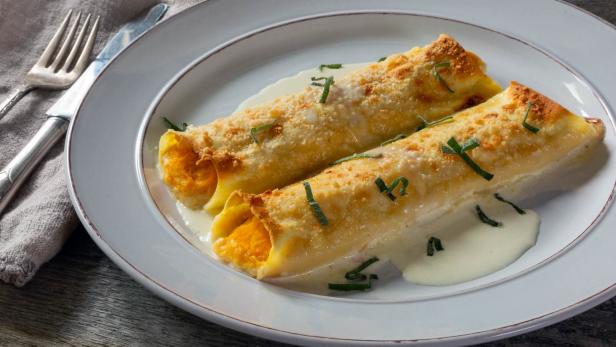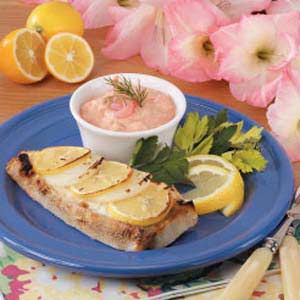
My goal here is to demystify the process of making homemade pasta, but if you're short on time, you can use store-bought noodles with great results. The filling is easy and versatile, and you can customize it for any time of year. (I use pumpkin here, but butternut squash or any winter squash will work just as well.)
Provided by Michael Tusk
Categories main-dish
Time 3h
Yield 6 servings
Number Of Ingredients 18
Steps:
- (Note: The pasta dough and finished pasta can be made several days in advance. If making pasta with a stand mixer, skip to step 3. If using store-bought dried lasagna noodles, skip to step 4.) Make pasta by hand: On a clean work surface, combine both flours and salt. Make a well in the center of the flour. Carefully add egg yolks and whole egg directly into the well, while using a fork to gently stir and combine. Continue stirring in a circular motion, gradually incorporating some flour from the sides of the well, about 1 minute. (Make sure that the sides of the well are high enough so the egg doesn't spill over.) Next, slowly add the olive oil to the center of the well, stirring the whole time. When eggs and oil are fully combined, scrape mixture off the fork, add it to the dough, and use your hands to add flour and knead. Make sure to incorporate any little pieces of dough that have come off the main mass. Add water as needed. After the dough has come together in a rough mass, continue kneading to activate the gluten until the dough is shiny and uniform in texture, about 5-7 minutes. (There may be a few leftover tablespoons of flour that don't get incorporated into the dough; this is fine.) Wrap the dough in plastic wrap and allow it to rest for at least 1 hour at room temperature, up to 2 days in the refrigerator, or 1 week in the freezer. (If frozen, bring to room temperature before moving on to Step 2.)
- Turn the dial of the pasta machine to the widest setting (usually setting number 1 on the dial). Lightly flour the dough, then flatten slightly with your hand or a rolling pin. Pass the dough through the machine. Fold dough in half and pass through the machine again. Continue to pass the dough through the machine, increasing the setting until the dough is thin to medium thickness (8 on a scale of 10 for the machine setting), about 15-20 times. Add flour whenever it gets too sticky. Trim the finished sheets into rectangles (approximately 6" x 10") and dust lightly with flour, to prevent sticking. Cover with plastic wrap until ready to blanch.
- Make pasta in a stand mixer: In a stand mixer fitted with a paddle attachment, combine the flours and salt. Make a well in the dry ingredients, then add the whole egg and egg yolks, and slowly work the dough with the mixer. Add the olive oil and water while slowly kneading the dough with the paddle. Once the dry ingredients are fully incorporated, continue to knead the dough with the paddle for 1 to 2 minutes. Wrap the dough in plastic wrap and allow it to rest for at least 1 hour at room temperature, up to 2 days in the refrigerator, or 1 week in the freezer. (If frozen, bring to room temperature before moving on to Step 2.) After resting the dough, roll out the pasta sheets (Step 2).
- Parcook pasta sheets: Bring a large stock pot of water to a boil, then season with a generous pinch of salt. Prepare a large bowl with ice water, to shock the pasta sheets after blanching. With a large slotted spoon or mesh strainer, gently lower the pasta sheets into the boiling water, blanching the sheets for about 45 seconds. (If using store-bought dried lasagna noodles, follow directions to cook to al dente.) Remove the pasta to the prepared bowl of ice water. Once the pasta has cooled completely, remove the sheets from the ice water, gently pat dry and spread onto wax paper or plastic wrap that has been brushed lightly with oil. Set aside.
- Filling, part 1: Preheat the oven to 375 degrees F. Cut the pumpkin or butternut squash in half lengthwise; scoop out and discard the inner stringy flesh and seeds. Peel and cut the onion into ¼-inch thick slices.Rub the butter and ½ teaspoon salt around the inner cavity. Stuff the inside of each half with a the sage leaves and onion slices. Place the halves, cut side down, into a baking dish lined with parchment paper, then pour ½ cup of water around the halves. Cover the whole dish tightly with foil. Bake until the squash is fork tender, 50-60 minutes. Remove from the oven and cool, 30 minutes.
- Filling, part 2: When the squash is cool enough to handle, scrape the flesh into a bowl; discard the skin. (You should have about 2 cups squash.) Finely chop the onion and sage and add to the squash. Add the remaining ½ teaspoon salt, ricotta, and the Parmesan, then mix well. Finally, taste and adjust seasoning with salt as needed. (Note: Filling can be made up to 3 days in advance. Cool completely, then refrigerate in an airtight container.)
- Cannelloni assembly: Preheat oven to 400 degrees F. Trim the blanched pasta sheets to fit the baking dish. (Chef Tusk trims his sheets to 5" x 8".) In a small bowl, beat the egg to create an egg wash; alternatively, use water. Brush pasta sheets along one edge, lengthwise, with egg wash or water. Place filling into a pastry bag and pipe ¼ cup evenly down the other edge of the pasta sheet. (Alternatively, use a spoon for the filling.) Starting with the filling side, roll the cannelloni like a cigar, sealing the edge with the egg wash or water. Repeat with remaining pasta and filling.
- Pour cream into a baking dish. Place the cannelloni, seam side down, on top of the cream in an even layer. (If necessary, you can cut the cannelloni in half to fit your dish.) Sprinkle with Parmesan, then bake until light brown and bubbly along the edges, 15-20 minutes.
- Broil cannelloni until top is lightly browned and cream is bubbly, about 2 minutes. Keep an eye on the cannelloni the entire time to prevent scorching! Serve immediately with the reduced cream spooned over the pasta.
Are you curently on diet or you just want to control your food's nutritions, ingredients? We will help you find recipes by cooking method, nutrition, ingredients...
Check it out »
You'll also love








Sahil Raj Malla
[email protected]I love this recipe! It's so easy to make and always turns out great.
Jay L “JBones”
[email protected]This dish is so good! I can't wait to make it again.
Zemat meles Zemichael
[email protected]This recipe is a keeper. I'll definitely be making it again.
Rupantor Mujomdar
[email protected]This squash and sage cannelloni is a delicious and unique dish. I highly recommend it.
Wyatt Foster
[email protected]I've made this dish several times and it's always a hit. It's a great dish to serve for a special occasion.
Riley yeetersen
[email protected]This recipe is a great way to get kids to eat their vegetables. My kids loved the squash and sage filling.
Ziad Tamer2468
[email protected]I made this dish for a vegetarian friend and she loved it. She said it was the best squash dish she's ever had.
Sameer Shrestha
[email protected]This dish is a bit time-consuming to make, but it's worth the effort. The cannelloni are so delicious and flavorful.
Melissa Leow
[email protected]I'm not a fan of sage, so I omitted it from the recipe. The cannelloni were still delicious.
Shayun Khan
[email protected]This recipe is a great way to use up leftover squash. I had some roasted squash in the fridge and it worked perfectly.
PATTI PATTI
[email protected]I had some trouble finding acorn squash, so I used butternut squash instead. It worked just fine.
Rebecca Ajayi
[email protected]This dish was a bit too rich for my taste, but my husband loved it. I think next time I'll use less butter and cream.
Naeem Abbas
[email protected]I followed the recipe exactly and the cannelloni turned out perfectly. The squash and sage filling was delicious and the ricotta cheese added a nice creaminess.
DG Digital
[email protected]This squash and sage cannelloni is a delicious and unique dish. I loved the combination of flavors and textures. The squash was perfectly roasted and the sage added a nice savory flavor.
Any Azhar
[email protected]I love this recipe! It's so easy to make and always a crowd-pleaser. I've made it for potlucks, parties, and even just a weeknight dinner.
Tyler Carey
[email protected]This dish was easy to make and turned out great! I used butternut squash instead of acorn squash and it worked perfectly. The sage added a nice touch of flavor.
Sirieix Trémaux
[email protected]I'm not usually a fan of squash, but this dish changed my mind. The squash was perfectly roasted and the sage added a nice earthy flavor. The cannelloni were also cooked perfectly.
Harrison Kiyaga Meredith
[email protected]This squash and sage cannelloni is the perfect fall dish. It's hearty and filling, but also light and flavorful. I love the combination of sweet squash, savory sage, and creamy ricotta cheese.
MS Monir
[email protected]I made this dish for a dinner party and it was a huge success! Everyone loved the unique flavor combination and the presentation was beautiful. I highly recommend this recipe.
MASTERBOSS13
[email protected]This squash and sage cannelloni was a hit with my family! The flavors were perfectly balanced and the cannelloni were cooked to perfection. I will definitely be making this again.